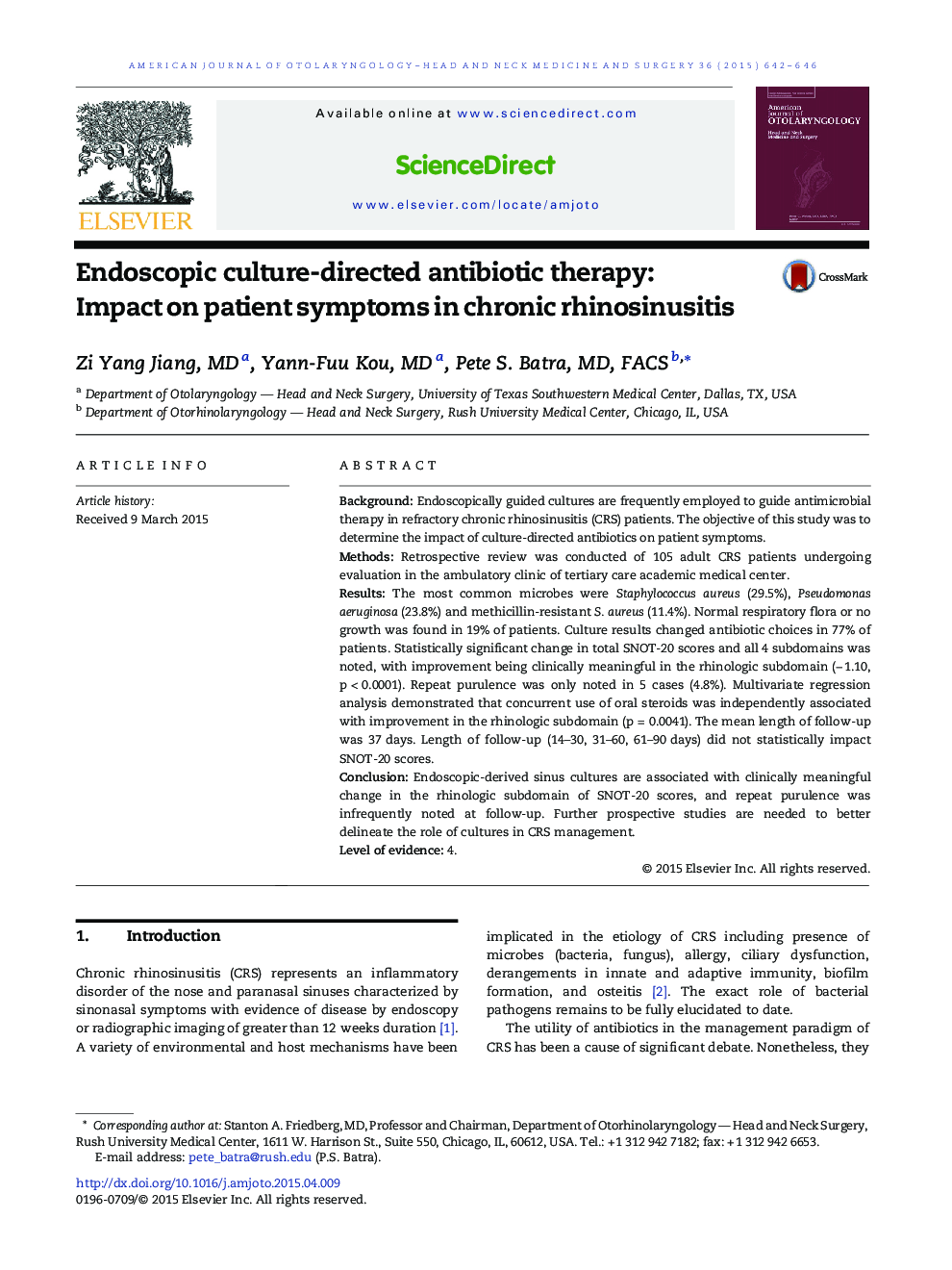| Article ID | Journal | Published Year | Pages | File Type |
|---|---|---|---|---|
| 4103056 | American Journal of Otolaryngology | 2015 | 5 Pages |
BackgroundEndoscopically guided cultures are frequently employed to guide antimicrobial therapy in refractory chronic rhinosinusitis (CRS) patients. The objective of this study was to determine the impact of culture-directed antibiotics on patient symptoms.MethodsRetrospective review was conducted of 105 adult CRS patients undergoing evaluation in the ambulatory clinic of tertiary care academic medical center.ResultsThe most common microbes were Staphylococcus aureus (29.5%), Pseudomonas aeruginosa (23.8%) and methicillin-resistant S. aureus (11.4%). Normal respiratory flora or no growth was found in 19% of patients. Culture results changed antibiotic choices in 77% of patients. Statistically significant change in total SNOT-20 scores and all 4 subdomains was noted, with improvement being clinically meaningful in the rhinologic subdomain (− 1.10, p < 0.0001). Repeat purulence was only noted in 5 cases (4.8%). Multivariate regression analysis demonstrated that concurrent use of oral steroids was independently associated with improvement in the rhinologic subdomain (p = 0.0041). The mean length of follow-up was 37 days. Length of follow-up (14–30, 31–60, 61–90 days) did not statistically impact SNOT-20 scores.ConclusionEndoscopic-derived sinus cultures are associated with clinically meaningful change in the rhinologic subdomain of SNOT-20 scores, and repeat purulence was infrequently noted at follow-up. Further prospective studies are needed to better delineate the role of cultures in CRS management.Level of evidence4.
